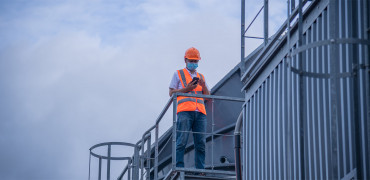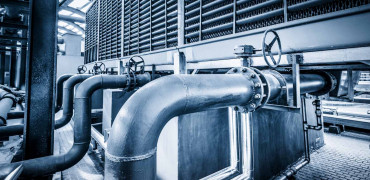There was a time when maintenance schedules were planned around the year’s seasons.
Heating systems could be shut down for checks and servicing in the summer months, and cooling systems maintained in winter.
But this is no longer the case. Our patterns of building use have changed, and so have the systems in them.
With a growing number of office-based organisations shifting to hybrid working patterns, it’s far more challenging for facilities management (FM) teams to work around predictable ‘quiet times’ in the workplace.
It’s vital to work with a team that can provide robust advice based on wide experience
Different requirements
Hybrid working has many benefits for employees, but it can keep FM and servicing teams on their toes when it comes to dealing with breakdowns in vital equipment such as heating and cooling systems.
And it can be just as difficult to predict the results when some spaces in the office are used less often.
This can have energy-saving benefits (for example, the space will not require heating or cooling).
But it may mean that equipment such as chillers are not operating at optimal efficiency because they were designed to deliver indoor environmental conditions for 9am to 5pm, full occupancy requirements.
New workplace patterns
The British Council for Offices (BCO) has recognised that new patterns of workplace occupancy and use require new approaches to design and operation.
In June 2022, the BCO produced a position paper on updating its widely-used specification document. The paper includes proposals such as assumed lower average occupancy densities in offices and better indoor air quality.
With all the changes that have gone on in office use in the past year, it’s a good time to consider approaches to maintenance, particularly when it comes to critical building services equipment such as chillers, for example.
Of course there are still chillers that cool and work alongside heating systems, but you can now have a heat pump chiller which cools in summer and heats in winter. There are also solutions that can heat and cool simultaneously to offset cooling requirement in say, a gym or IT room, against heating in other parts of the building or even the hot water supply.
All of these need regular checking.
A planned approach
Rather than taking a seasonal approach to planning service terms, at Mitsubishi Electric Service & Maintenance, we are focusing on helping clients shift to planned preventative maintenance (PPM).
The main benefit of PPM is that building services equipment is being regularly checked to ensure continued efficient performance. Planned visits reduce the likelihood of costly emergency call-outs – and the breakdown of vital services such as air conditioning during hotter weather.
But PPM isn’t just about avoiding unexpected breakdowns. Planned maintenance by professionals who understand the equipment can also support long-term energy efficiency. And as many building owners are seeing their energy costs going through the roof, ensuring that chillers are optimised can result in significant operational cost-savings.
At the same time, we are also dealing with rapidly-rising energy costs, against the background of increasingly stringent regulations on energy use in our building stock. Building managers and FMs must ensure that building services (big energy users in most buildings) operate effectively and efficiently.
Occupant wellbeing
The BCO’s note on indoor air quality is also important, as it reflects a wider interest around occupant wellbeing in modern offices. One consequence of this focus on air quality is that building services equipment may be working harder to deliver continuous IAQ.
With this in mind, it’s important to remember that while modern HVAC equipment is built to last, it needs regular servicing to do so.
Left to its own devices, particularly when operating for longer, the equipment may not develop faults – but performance will degrade over time.
This leads to struggling equipment that doesn’t perform at its best or most energy efficient. And it may reach its end-of-life sooner.
Planned preventative maintenance visits can ensure that this doesn’t happen, and that the lifetime of chillers is extended to its fullest.
As we enter a new era for office operations, it’s vital to work with a team that can provide robust advice based on wide experience. At Mitsubishi Electric Service & Maintenance, our engineers are trained and experienced in working across a range of chiller brands (not just our own).
Working with a trusted team on a PPM schedule means that you can benefit from their insights and advice on a regular basis, ensuring that equipment performance keeps pace with your changing requirements, whatever the time of year.
Adrian Mullen is Business Development Manager



